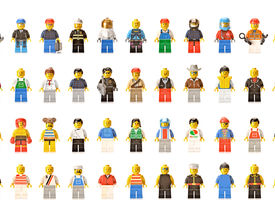Whether we talk about educational, business, or brand events, multidisciplinary conferences are the optimal solution when you want to invite a diverse public, with different interests and areas of expertise.
As Greg Oates, executive editor at Skift, highlights, the mission of these multidisciplinary conferences is to have a maximum impact and personalize the learning for attendees. Oates explains, "Conference organizers are developing more multidisciplinary programming that pulls from both the business and creative industries, delivering a new convergence of experiences."
The goal of this format is not only the convergence of different industries by creating a cross-disciplinary content, but also the possibility of facilitating networking between people with different competences or areas of expertise.
Seen as the "festivalization of meetings and events", the trend of multidisciplinary conferences became prominent only recently. In other article, Oates argues, "The festivalization of meetings trend started with the multidisciplinary programming at SXSW and TED, bringing together thought leaders from different sectors to share their views on driving change in a new era of global connectivity."
As you can understand, the complexity of this type of event demands a different approach in planning and designing your attendees' experience. Here are a few tips that can help you with that:
Step 1. Kick off with an inaugural session
Multidisciplinary conferences must have a core thematic that articulates coherently the topics that will be discussed. For example, you could run a conference for astrophysics (the core) with round tables and keynote speakers talking about multiple sub-disciplines. To make sure that everyone will understand and contextualize the conference, make sure to kick off with an inaugural session for everybody. Let it be an introduction for the event, during which the moderator(s) will explain the goals and the event’s dynamic.
Step 2. Enable your attendees to personalize real-time their experiences
For a bigger impact and more flexibility, allow your attendees to decide in real time what their program should look like. Offer them a digital schedule they can operate with by adding or eliminating different sessions or event activities. By doing so, you'll empower your guests with the control over their own experience, also providing them with an efficient tool to navigate the complexity of the multidisciplinary conference.
Step 3. Facilitate an organic networking and cross-discipline convergence
You can't invite so many people from different disciplines and areas of expertise without offering them a networking platform. In this case, you have two options, which can be complementary. First, make room on the event program for a few networking sessions. You can go with the traditional format, or you can plan a B2B matchmaking dynamic. Second, set up a space where people can meet, talk, and work together during the entire conference. This way, you'll increase the chances for the right people to build high-quality professional connections.
Step 4. Integrate different types of sessions
From round tables and art exhibitions to startup pitch competitions and trade shows, transform your multidisciplinary conference into a cross-creative experience. By doing so, you'll provide an incredible pool of ideas and inspiration to your attendees, adding value to their professional and personal lives. Also, you’ll ensure a deeply immersive experience that will help your guests go through self-actualization and transformation.
Step 5. Don't forget about the entertainment
A multidisciplinary programming doesn’t necessarily refer to education only. To avoid the informational overload your audience may experience, insert a few entertaining activities, such as short performances or even small music concerts. Also, encourage them to unleash their creative and innovative potential to disrupt their industry by mixing different fun activities that will require their direct implication. These sessions can be related to DIY workshops, meditations, or even startup pre-incubators.
Final thoughts
Nowadays, when we talk about multidisciplinary conferences, we don't think about round tables or keynote speakers only. These events are gradually taking the form of big festivals, with the goal of boosting innovation, creativity, and meaningful cross-disciplinary networking. That's why planning a conference often resembles planning multiple events. Despite its complexity, multidisciplinary conferences are an incredible way of getting maximum impact from an event.



